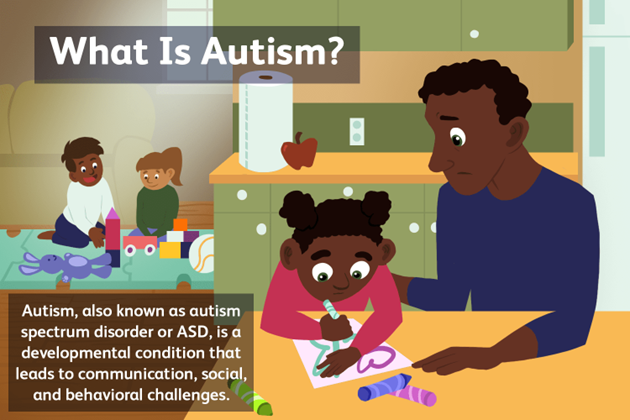The nurse is collecting data on an 18-month-old child with a diagnosis of autism spectrum disorder (ASD).
What clinical manifestation would likely have been noted in the child with this diagnosis?
The child does not make eye contact.
The child sits quietly in the caregiver's lap during the interview.
The child smiles when the caregiver shows her a stuffed animal.
The child cries and runs to the door when the caregiver leaves the room.
The Correct Answer is A
One of the common symptoms of autism spectrum disorder (ASD) is difficulty with social communication and interaction, which can include avoiding or not keeping eye contact.

Choice B is not an answer because sitting quietly in the caregiver’s lap during the interview is not a typical symptom of ASD.
Choice C is not an answer because smiling when shown a stuffed animal is not a typical symptom of ASD.
Choice D is not an answer because crying and running to the door when the caregiver leaves the room is not typical symptom of ASD.
Nursing Test Bank
Naxlex Comprehensive Predictor Exams
Related Questions
Correct Answer is C
Explanation
Elevating the head of the bed can help to reduce pressure on the cervical spine and promote comfort for the client.
Choice A is not correct because a pelvic girdle is not used with halo traction.
Choice B is not correct because placing the client in a supine position can increase pressure on the cervical spine.
Choice D is not correct because elevating the foot of the bed would not provide any benefit for a client in halo traction.
Correct Answer is C
Explanation
A soft toy that squeaks or crackles when squeezed is a good choice for a 7- month-old infant.
At this age, babies love to explore using their mouths and hands, and they might start teething around 6 months old.
A soft toy that makes noise when squeezed can provide sensory stimulation and help with the development of fine motor skills.
A set of blocks to build a block tower is not suitable for a 7-month-old infant as they are still developing their motor skills.
A colorful crib mobile that plays music is more suitable for younger infants.
A wooden farm animal puzzle with large pieces is not suitable for a 7-month-old infant as they are still developing their cognitive and motor skills.

Whether you are a student looking to ace your exams or a practicing nurse seeking to enhance your expertise , our nursing education contents will empower you with the confidence and competence to make a difference in the lives of patients and become a respected leader in the healthcare field.
Visit Naxlex, invest in your future and unlock endless possibilities with our unparalleled nursing education contents today
Report Wrong Answer on the Current Question
Do you disagree with the answer? If yes, what is your expected answer? Explain.
Kindly be descriptive with the issue you are facing.
